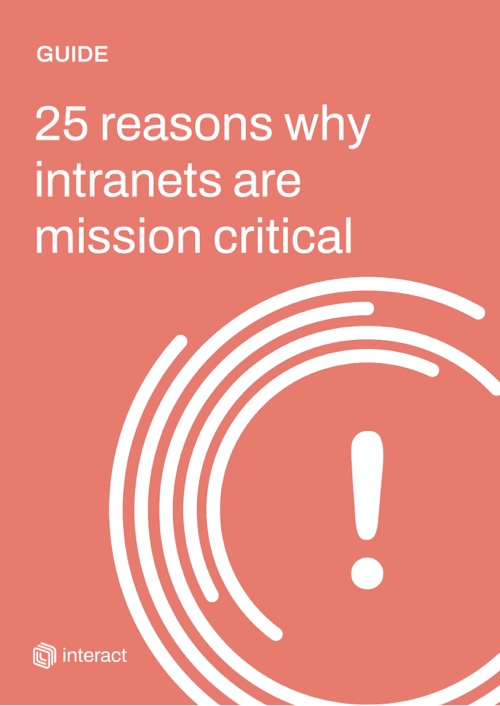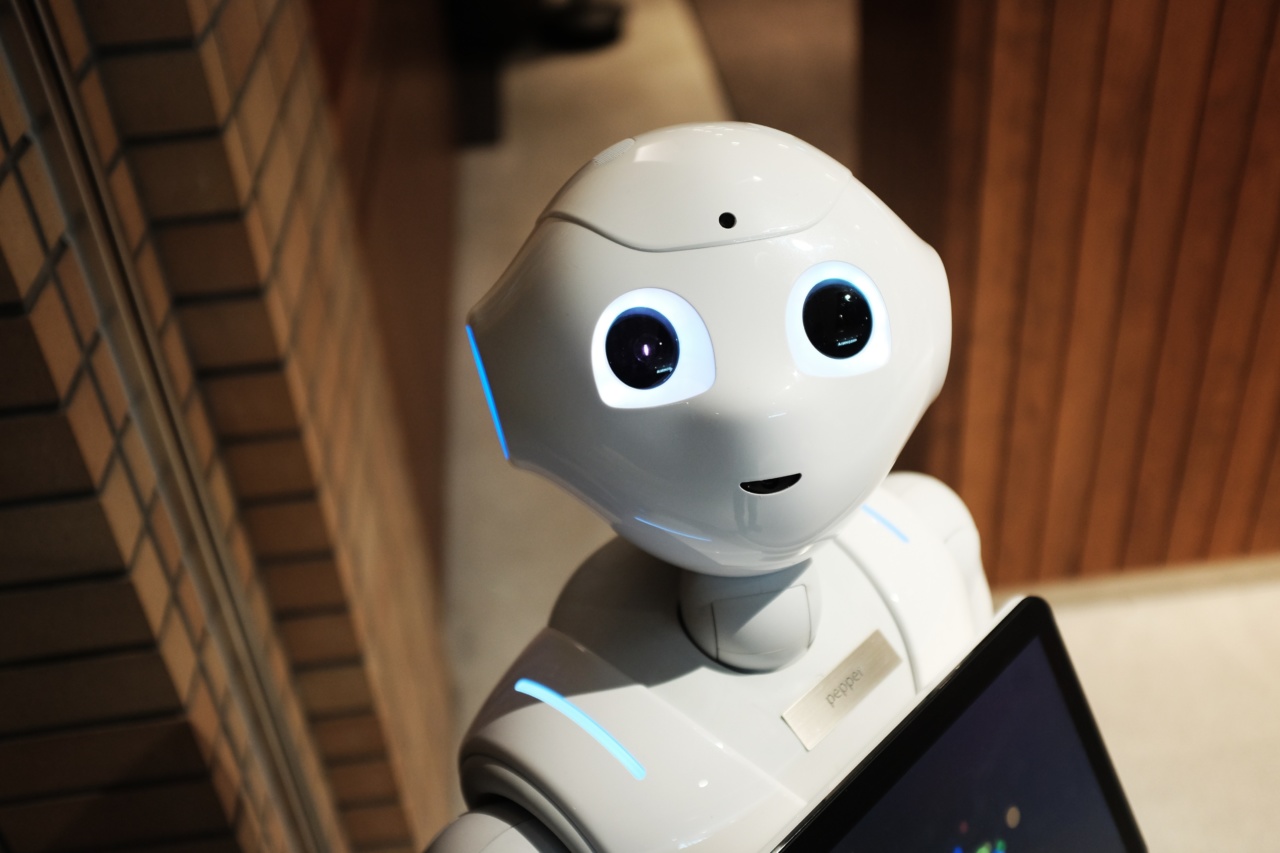Artificial Intelligence (AI) is changing the workplace in many ways. For HR and comms people, it can be tricky keeping up with the impact it is having, and the potential it has for improving company culture and the employee experience. Here, we explore the human impact AI is making in the workplace.
Although it’s sometimes mooted by the media as a job-stealing technology, AI in the workplace isn’t something to be feared. It’s evident from the many applications of AI we’re already seeing across the digital workplace that it is enhancing the way we perform our roles, so the idea it could soon turn on us like HAL 9000 in 2001: A Space Odyssey is a little far-fetched.
Harnessing the potential of AI s no longer the futuristic vision that has been presented to us in sci-fi movies, but a present-day reality transforming businesses worldwide. By late 2022, ChatGPT shattered records, attracting one million users in under a week and amassing over 100 million monthly users by early 2023, showcasing the rapid adoption and trust in AI-driven solutions. What’s more, a staggering 87% of organizations believe AI provides a critical competitive edge, underscoring its strategic importance in today’s market.
Let’s look at some of the most interesting AI use cases in the digital workplace:
Learning and development

Learning and development (L&D) has always been crucial to business growth and success, yet the delivery of workplace training is an area that is undergoing its own rapid development. Traditional group-based learning doesn’t always provide the right learning environment, structure, or results for every individual, and in recent years there has been a growing emphasis on more tailored and flexible development programs.
Better L&D delivery can also help organizations prevent and overcome skills gaps, incorporating AI capabilities into their L&D strategies to help re-skill workforces.
An intranet can help solve your organization’s toughest challenges
Rather than removing the human element, AI and automation are streamlining traditionally manual processes associated with coaching and development, helping to reduce time and cost. One way this is being achieved is by pairing learners with courses and coaches who are accurately matched to their specific learning styles and requirements. Automation of reminders to complete learning modules and practice new skills in real-life situations also helps learners to put learning into action.
AI-driven algorithms are also helping to identify where employees could benefit from training in specific areas that help them thrive both inside and outside of work, such as leadership skills, or help coping with stress, depression, or sleep issues.
Automating tasks and balancing workloads

The Great Resignation, which is still a challenge in 2024, is driven by employees taking stock of what they find meaningful about their roles and looking for new opportunities if the boring and arduous tasks aren’t outweighed by exciting and fulfilling ones.
The automation of manual, repetitive tasks allows employees to spend more time on fulfilling and value-add tasks that help to grow the business and their own potential. This helps to improve the digital employee experience (DEX) and reduce attrition, but when people do leave, automation of the manual portion of their workload can help to reduce the burden on their team when the individual is not replaced immediately. This also removes the need to rush a new starter into the role and provides more time to find somebody who is the right fit.
Automation can also add value to time management, and the time spent looking for information, awaiting input from colleagues, or seeking approvals. AI-based systems that can identify which tasks need attention and when they need it can notify the right people at the right time, removing the time and stress of continually assessing priorities and chasing others for input.
Internal communication and employee engagement
Ensuring seamless communication and engagement among employees is paramount in today’s workplaces where productivity, job satisfaction, and alignment with organizational goals are common challenges. Modern intranets powered by AI offer an array of innovative features that significantly enhance the employee experience.
Imagine being able to broadcast important communications to all employees or specific groups at the most effective time, through their preferred channels, and in their preferred language, all with just one click. Engagement AI makes this possible, ensuring that messages reach their intended audience in the most impactful way. This personalized approach not only improves communication efficiency but also increases employee engagement and satisfaction.
Digital clutter can be a significant drain on productivity, creating friction and confusion. Intranets with AI recognition capabilities can detect and flag pieces of content that are similar to each other, helping to avoid unnecessary replication. In turn, this helps to ensure that the company intranet remains organized and that employees can easily find the information they need without sifting through redundant material.
Even when your intranet is relatively clutter free, navigating through vast amounts of information can be daunting. Automated summary population is another modern intranet AI capability that addresses this by providing concise summaries of documents and articles. This enhances findability, enabling employees to quickly grasp the essence of content and access relevant information more efficiently.
AI-driven transcriptions and speech analysis

A raft of new transcription and speech analysis technologies based on Automated Speech Recognition (ASR) and Natural Language Processing (NLP) are allowing people to transcribe audio instantly. From making notes and recording minutes to understanding conversations with customers and clients and producing marketing content, employees no longer need to rely on hastily scrawled notes.
It’s estimated that the speech and voice recognition market will be worth $22 billion by 2026. Where some employees may struggle to process or take note of all of the information shared with them during a virtual call or meeting, an AI-powered transcription plugin can autonomously produce a transcript of the call while it’s taking place.
An intranet can help solve your organization’s toughest challenges
Similarly, voice recognition and audio transcription technologies can improve both the employee and customer experience in customer service departments. Live transcription during a customer service call can help customer service agents comprehend what difficult-to-understand customers are trying to communicate. The addition of sentiment analysis technology can determine whether the caller is feeling positive, negative, or neutral, based on their tone. Some iterations of this technology will then suggest responses for the agent to turn a negative or neutral situation into a positive one.
Content inclusivity and accessibility
Creating a workplace culture that values diversity and inclusion is crucial, and this should extend to your employee-facing comms and content. AI-powered inclusivity checkers can analyze content, flag risky words and phrasing, and encourage authors to incorporate suggested positive and progressive alternatives.
In a globalized work environment, communication across different languages can also be challenging and this is another area where inclusivity is key. Multi-language AI translations make it effortless to globalize your communication and improve content accessibility, and with these capabilities, employees can access information in their preferred language, breaking down accessibility barriers and fostering a more connected and inclusive workplace.
Image alternative text (alt text) another area where AI can help to improve inclusivity and accessibility. Alt text is a brief written description of an image that helps visually impaired users understand the content of the image through screen readers and provides context when the image fails to load. By automating the generation of the text description for images on intranet content, AI removes the task for the editor and ensures that this important step does not get missed.
Virtual assistants

Many of us have become accustomed to using virtual assistants such as Siri and Alexa, but now we’re beginning to see similar AI-powered assistants entering the workplace. Gartner predicts that as soon as 2025, 50% of knowledge workers will use a virtual assistant daily. Working with data is one area where this is proving to be particularly effective.
For example, people working with complex data sets can get the answers they need without spending time and brainpower crunching the numbers or running the data through various tools and calculators. Simply asking a virtual assistant with augmented analytical capabilities questions about the data can provide quick and simple answers to complex equations, and explanations of specific data points.
An intranet can help solve your organization’s toughest challenges
Soon, we should expect to see deep learning capabilities in workplace virtual assistant technologies. This will enable assistants to understand employees’ decision-making processes and apply those same processes to different scenarios, resulting in faster and smarter recommendations to aid decision-making.
Connecting enterprises through content recommendations

As the future of work becomes increasingly dispersed, encouraging engagement and facilitating connections between colleagues outside of their immediate teams will be essential to building a social workplace and upholding a strong and vibrant company culture.
This is where user-generated content on an organization’s intranet software becomes valuable. Getting that content in front of other employees can be a challenge though, especially when everyone is working across multiple digital platforms and digesting multichannel messaging. Ensuring individuals are exposed to content that aligns with their interests will also become increasingly important to make employees feel valued through personalized experiences.
“HR should always have a finger on the pulse of the current employee experience. What do workers want across their digital, social, and environmental experiences, and is your organization meeting those needs? Mechanisms and technology that allow for real-time feedback and sentiment analysis may ensure that workers feel heard and allow the organization to respond swiftly in the moments that matter.”
KPMG, Personal and customized: The future of employee experience
Individuals who are part of large enterprises can be matched with intranet content that will resonate with them. This AI functionality understands their content preferences and ensures content that matches those preferences is automatically recommended.
This serendipitous content discovery helps to unite and connect enterprises by encouraging employees to engage with intranet content generated by colleagues they may not otherwise engage with or even meet in person. This bolsters the idea of the social workplace and the general sense of belonging. Having a searchable people directory is another important part of this as the filling of user profiles helps colleagues to connect.
Enhancing the human experience
While these are just a few of the existing and developing workplace use cases, there are many interesting ways that AI is beginning to change the way we work.
AI will continue to reshape the workplace as new and existing applications continue to evolve, and rather than turning work into a soulless, robotic exercise, its presence is only enhancing the human element of work, from the way we develop our skillsets, manage our workloads, and, perhaps most importantly, interact with each other.


